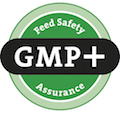The term "Phytotherapy" derives from the ancient Greek language. The substantive "phytòn" means plant, tree and vegetable.
1.1 History of Phytoterapy
For thousands of years the main therapeutic instruments in the hands of mankind have been medical herbs. All these years of utilization have given the chance to achieve great experience, to which modern phytotherapy can now refer. Phytotherapy was born along with mankind and was coded since the 8th millennium BC in China and India. Papyri, describing the use of many herbs, have been discovered in Egypt more than 4000 years BC. It is during the medieval period that the use of herbal compounds reaches it’s most. The study of medicinal herbs is consolidated in many Monasterys, where, inside the gardens aromatic and medical herbs with known therapeutic properties are grown along with vegetables and flowers. Arabs were great doctors and manipulators of plants, they studied the properties, introduced and spread the knowledge of many drugs in the Mediterranean area. The Arabs also taught how to harvest and dry the plants in order to extract the active principals and how to conserve them. They were the first to talk about volatile principals, and their concentration in the different parts of plants.
1.2 Modern phytoterapy
Modern phytotherapy is a branch of pharmaceutical therapy that uses active molecules, as they are found in the plant or after simple concentration procedures. This is probably the main difference compared to conventional pharmaceutical therapy, which uses active molecules in a pure state. All the other basic concepts of pharmacology are the same as in phytotherapy: mode of action, dose effect ratio, absorption, metabolism, excretion, side effects etc. Basically there is no difference between natural and synthetic drugs, in the way they work and are used. OMS in order to guarantee the right use of medicinal herbs has written and published some “guidelines for the evaluation of medicines derived from plants" in which the quality, safety and efficacy requirements are described.
Furthermore for those who work in the field of phytotherapy the monographs of the German E commission and of the ESCOP (European scientific cooperative for Phytotherapy), of the OMS are available. The safety of the natural product used in therapy is of primary importance. All the plants identified as toxic, or with low therapeutic index and that in any case can not be used in therapy, must be therefore excluded from phytotherapy.
2 Phytocomplex
The Phytocomplex is the complex of active principles – and not only- drawn from a plant, that has a specific biological activity.
Considering all the factors affecting the biosynthesis of the active principles and consequently on the quali-quantitative composition of the plant it is extremely important to adopt a method that defines with accuracy and in a constant manner the composition of the extract one wants to use; besides the fact that lots of different extracts of different plants must have a similar chemical composition.
Therefore it is necessary to use an extract that is well defined in its chemical composition and in the quantity of specific active principles. In other words it is necessary to titre the active principles.
These compounds, the presence of which give the titre, are called "MARKERS". For example ginkgo biloba dry extract standardized titre, means the extract of ginkgo biloba leaves identified with the initials "Egb761" of which efficacy and safety have been sufficiently proved. The composition is the following: 24% flavonoid eteroside derivatives, 6% terpenic compounds, 4% ginkolids, 3% bilobalide.
Frequently also infusions and decoctions are used especially as minor cures, but these extemporary preparations are not always useful due to the poor extractability of some principles (terpenics, essential oils........).
The biologic activity of the complex of active principles is usually stronger than the sum of activity of the single active molecules and the presence of substances apparently having no specific activity can have a very important synergistic effect. Szent-Gyorgyie and others have demonstrated that the presence of flavonoids in citrus fruit's juice (polyphenolic compounds able to alternatively uptake and release an atom of hydrogen) are able to speed up the reduction of dehydro ascorbic acid into ascorbic acid, enabling vitamin C regeneration. Citrus fruit juice in toto is more effective in curing capillary lesions and increasing life span of animals affected by experimentally induced scorbutus, than vitamin C alone.
The advantages of the phytocomplex can be summarise in the following:
- Several and various actions
- Synergy
- Better bioavailability
- Better tolerance and minor toxicity
2.1 Phytocomplex Quality
Quality is a basic requirement for the safety and constancy of the therapeutic effect of both synthetic and natural drugs. The vegetable drug or its extract has a complex composition in which the active principles are not always visible. Furthermore the composition can show a very high variability depending on various factors, that occur, or in the plant (age, habitat development stage, genetic factors cultivar.....), or during preparation ( harvesting and drying technique) or during conservation of the drug (germ and mould attacks, mycotoxin contamination, degradation reactions .......).
The extreme variability of the active principles contained in vegetable drugs makes quality control very important, so that the OMS recommendations in this sense have been adopted by the Pharmacopoeias of the community countries and at present there is an effort to bring into agreement legislation in all the countries.
2.2 Phytocomplex Typology
The definition of the phytocomplex is important since it must be kept in mind that the extraction technique changes its composition in comparison to the starting point
The nature and the composition of the substances extracted are not the same since the oxidation-reduction process and other chemical changes that occur during distillation modify the chemical composition of the essence.
2.3 Example of phytocomplex components
Oleum = Oil obtained through pressing or crushing of a part of the plant, or through extraction with specific solvents that are then removed Oily liquid in normal conditions , non soluble in water, soluble in organic solvents.
Aetheroleum = Essential or volatile oil. It appears as a liquid with a characteristic smell, sticky and does not leave a persistent stain on paper. Insoluble in water soluble in ethyl ether , mixes with fat oils. It can be found in cells and glands of all parts of the plant: roots, rhizomes, trunks, wood, leaves, flowers, fruits and seeds.
Essencea = The essence is given by all the natural chemical compounds (volatile and lipophil), that are contained in aromatic plants, (whether they are principal components or not), contained in different types of secretion organs.
Some considerations on the essential oil components.
Phenols: have a strong antimicrobial activity towards Gram+ and Gram-.
Alcohols: Antimicrobial activity less effective than phenols but also less toxic.
Aldehydes: antimicrobial and antiphlogistic activity.
Oxides: Tropism for the respiratory tract.
Monoterpens: Decongestive antitussive mucolytic, balsamic and antalgic action.
Sesquiterpens: Anti inflammatory action particularly useful for treatment of skin and mucosal infections.
Esters:: Antiinflammatory antispasmodic and decongestive agents.
Terpens: Have a cell protective action on the gastric mucose, antioxidative antistress, antibronchospamic, anti inflammatory, anti tumor and also a light antimicrobial activity.
2.4 Example of phytocomplex blends
It clearly appears that the combined action of several chemical compounds, often present at the same time in one single essential oil, or even better in a mixture of more oils, have an antibacterial effect that is referable to a synergistic action on several cell structures and functions. Often the effect of the various components of an essential oil on the bacterial cell (for example alcohols and Phenols) are contemporaneously carried out in synergy. At the same time this synergistic action reduces the risk of developing resistance mechanisms.
Essential oil blends (eucalyptus, thyme marjoram, lavender, etc.) with anti septic, mucolytic and expectorant activity, combined with antibacterial hydro alcoholic extracts (bee glue) and immuno-stimulants (Echinacea), have shown to be effective in the prevention and treatment of respiratory pathologies. Other phyto preparations also made of essential oils extracts of bee glue and officinal herbs with a protective effect on the intestinal mucosa are indicated in the treatment of gastro enteric pathologies (salmonella, E. coli etc.). Preparations based on medical herbs with anti protozoa activity have shown to be effective in the treatment of Trichomoniasis. Essential oils (marjoram) and other preparations based on hydro alcoholic extracts effective on protozoa have shown to be efficacious for the control and treatment of coccidiosis.


